Industrial hot water boilers. Gas water heating industrial boilers
Any industrial enterprise, regardless of its profile and size, needs heat to heat its production areas. Moreover, many technological processes depend on the availability of thermal energy, for the generation of which industrial gas boilers are traditionally used. Thermal energy is supplied to production in two forms: hot water or steam.
Classification of industrial boiler systems
Thermal generators for needs industrial enterprises can be divided into the following groups:
- Water heating units low power(up to 500 kW) for servicing small industries. This should also include condensing boilers with high efficiency (up to 96%).
- Medium power heat generators (up to 2 MW). They are used in small urban boiler houses and for the needs of decentralized heat supply of enterprises.
- High-power gas plants (up to 20 MW or more), supplying heat to entire urban areas and large industrial facilities.
- Steam generator units for the production of dry and saturated steam for the technological needs of medium and large industries.
- Gas cogeneration units that produce thermal and electrical energy in a sequential mode.

Despite the high productivity of industrial boilers, the principle of their operation is not much different from domestic water heating units. They are equipped with a combustion chamber and a gas burner device, which are the main elements technological process. Heat of combustion natural gas transferred to the coolant through heat exchangers various designs. According to the method of heat transfer, the latter are divided into water-tube and fire-tube.
In a water tube heat exchanger, water circulates inside metal pipes, and fuel combustion products move through bundles of these pipelines. At the same time, thermal energy flue gases is transferred to the coolant, after which they go outside. In fire tube units, the media involved in the heat exchange process are located in reverse. Hot gases move in the pipes (flues), and the flues themselves are immersed in a boiler tank with water.
The movement of combustion products through the heat exchanger in all industrial heat generators is forced and is ensured in three ways:
- With the help of blowing machines (fans) that force air into the firebox.
- A fan installed at the outlet of the gas-air duct - a smoke exhauster.
- In a combined way, in this case the gas unit is equipped with both types of fans.
Design and principle of operation
Low-power units, as a rule, provide heating for small industrial buildings and workshops. They are equipped with rod-type burner devices, which are several parallel rods with many holes for the outlet of the air-fuel mixture. Mixing of fuel with air partially occurs inside the rods, the other part of the air is supplied directly to the firebox. The flame spreads evenly over the entire area, hot gases rise from it and heat a water-tube heat exchanger made of cast iron or steel. Such heat generators are considered low-temperature, since the coolant in them is heated to a maximum temperature of 90 ºС.
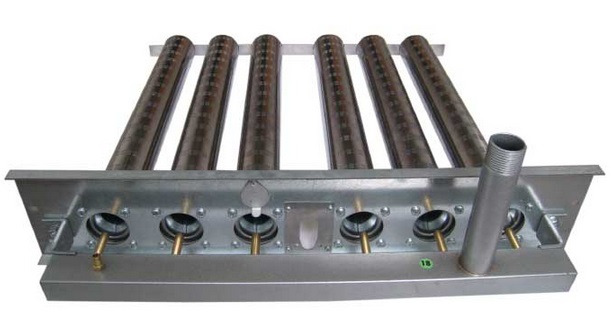
Units with a power of up to 100 kW are equipped with rod burners; in more powerful units, flare-type gas burners are used. Their difference is that the entire structure, together with the fan, is placed outside on the front panel of the boiler. Inside there is only a nozzle, from which a flame torch spreads throughout the entire space of the combustion chamber.
The burner flame heats the water jacket of the unit directly, and the exhaust combustion products enter the flue ducts of the fire tube heat exchanger. The combustion chamber itself is manufactured round section with corrugated walls, giving the firebox additional strength. Before exiting into the chimney channel, heated gases can travel through the flues 2 or 3 times in opposite directions, actively transferring heat to the water jacket. Accordingly, a heating boiler of this design is considered a two-pass or three-pass and is capable of heating water to a temperature of 115 ºС or producing steam, therefore it is high-temperature.

Fire-tube and water-tube heat exchangers have their own advantages and disadvantages, but are equally successfully used in industrial thermal power equipment. There is no clear answer to the question, which type of heat exchanger is better; it all depends on each individual case.
For example, a Ferroli industrial gas boiler, the power of which reaches 8 MW at a coolant pressure of up to 10 Bar, is traditionally made of a fire-tube design with three gas passages. The products of this manufacturer have proven themselves to be effective and reliable operation on various enterprises Worldwide. At the same time, many others Italian manufacturers offer steam generating units with water tube heat exchangers with high performance.
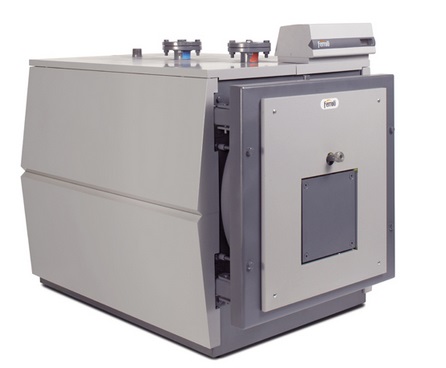
In order to increase the efficiency of thermal power plants, additional devices - economizers - are used to extract thermal energy from waste gases in boiler rooms of industrial enterprises. As a rule, they are supplied by the manufacturer complete with thermal power equipment. For example, economizers for industrial gas boilers Viessmann Vitomax 200HS Type M237 are built into the design of the unit itself. In fact, this is another fire tube device, located at the very end of the duct and significantly lowering the temperature of the flue gases. Due to this, the efficiency of the installation increases by 3-6%, which, given large volumes of natural gas consumed, is a significant saving.
Conclusion
Modern gas boilers for heating industrial buildings and structures are complex and high-tech devices. Their operating efficiency ranges from 83-96% depending on the technological process and operating mode. Such efficiency values are shown by thermal power equipment from leading foreign manufacturers.
The installation of heating and hot water supply systems is an event that is relevant not only for private residential buildings, but for industrial enterprises with large areas. Such objects require significant volumes hot water for heating and other household and technological needs. Conventional gas boilers, even if they are installed in a cascade, are unable to cope with this problem. Gas industrial water heating boilers will help solve this problem. Their power can reach enormous values - up to 20 MW.
Design features of industrial water heating installations
Heating units special purpose differ from household models not only in their appearance And overall dimensions, but also the internal structure.
The body of industrial boilers is made of high-quality alloy steel, capable of withstanding the significant pressure that forms inside the device.
Industrial heating installations are divided into two groups based on the type of heat exchanger located inside:
- The first type includes units with a fire tube or gas tube heat exchanger, consisting of a whole set of pipes. Gas combustion occurs inside these pipes, which leads to an increase in the temperature of the outer walls. Hot pipes located horizontally in the water column give off their heat to it. This equipment is capable of heating significant volumes of water for the heating system in a few hours.
- In the second type industrial installations The coolant moves through the inside of the heat exchanger pipes located around the gas burner. The pipes, located almost closely, are the walls of the combustion chamber.

Attention! The pipes may not be assembled in a complete circle, but placed in a semicircle above the burner. This device improves the aerodynamic performance inside the unit and makes it possible to effectively use the heat of combustion products escaping through the chimney.
Heat exchangers of both types are made of materials with high thermal conductivity.

Industrial gas boilers are manufactured mainly in horizontal design. To maximize heat retention inside the boiler, the surface of the combustion chamber is insulated from the outer walls thermal insulation materials. The thermal insulation layer not only retains heat, but also protects the outer walls from overheating and protects personnel from burns in direct contact with heating equipment.
Attention! Modern boiler houses with gas heating units have an efficiency of at least 95%, operate in an almost automatic mode, without requiring constant monitoring by personnel.
Basic rules for installation and operation of industrial gas boilers
Operating rules heating equipment provide for their periodic maintenance and cleaning. To easily carry out these activities, the burner is placed on a door that can open either to the right or to the left. The presence of special locking devices allows you to quickly and hermetically close the combustion chamber.
Attention! To organize a boiler room for an industrial enterprise, either a separate structure or a basement can be used.
Particular attention must be paid to the chimney system of gas heating equipment, which must meet the following requirements:
- The chimney must efficiently remove combustion products and provide effective work boiler
- To make it, it is necessary to use acid-resistant metal with a heat-insulating layer.
- Plays an important role correct installation chimney, which can be located inside the boiler room. The outer part of the chimney must be installed in a metal support structure. If the chimney is designed to work with a low-power boiler, it can be attached to external wall structures. For heating installations of significant power, mast chimneys are installed in a well-ventilated area located at some distance from the supply hot water object.
Almost all systems for removing combustion products, regardless of their type, are manufactured using modular technology from the boiler itself to the end of the chimney pipe.
Attention! If it is planned to build mast chimneys with a height of more than 40 m, then it is necessary to provide unloading segments. These elements unload general design and increase the reliability of its operation.
Models of heating gas equipment for use in enterprises
The larger the area served, the more carefully it is necessary to select an industrial gas water heating boiler. Among the units presented at modern market heating equipment, the following models can be distinguished:
- Wolf GKS Eurotwin boilers have a high efficiency of about 95%. The design of the installation includes two cylindrical chambers located one above the other. The large size of the combustion chamber ensures almost complete combustion of fuel and rapid heat transfer. The permissible maximum difference in temperature of the coolant in the forward and return lines is 50 0 C. The installation is equipped with a 100 mm thick thermal insulation layer, which ensures that heat loss by radiation is reduced to minimum value. Power range of the model range – 0.45-1.25 MW
- Wolf GKS Euromax boilers have heating surfaces located one above the other, which protects the device from condensation. Installations of this model are manufactured in two power options - 1.6 MW and 2.0 MW.
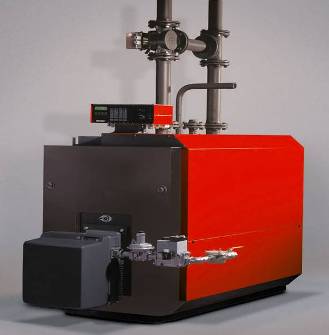
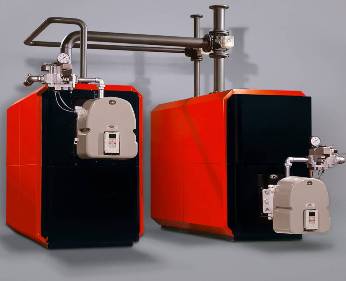
Attention! One of the most important advantages of industrial gas heating equipment is the constant supply of fuel. This eliminates the problems of storage, transportation across the enterprise territory and organizing the loading of fuel into the installation.
Today, many housing infrastructure facilities use autonomous gas heating. If for city apartments this possibility is limited by technical limits, then for the private sector heating system is one of the key aspects of home comfort.
Gas heating equipment can provide high-quality and efficient heating of residential premises in autonomous mode. Water-heating gas boilers are exactly the type of heating equipment that allows you to create the necessary comfort and coziness not only in a private home, but also in mini-hotels, in country houses and in cottages.
Technical capabilities of the equipment of this type are able to fully satisfy the needs for heating and hot water supply.
A water-heating gas boiler is a type of high-power household boiler equipment designed to simultaneously solve two problems - heating interior spaces large area and provision of normal volumes of hot water supply (hot water supply). This type heating equipment is used in which water circulation is forced.
On a note: natural or liquefied gas with an amount of heat during combustion of 33 MJ/m 3 at a temperature environment 20 0 C and atmospheric pressure of 745-765 mm Hg. Art.
During operation, a household boiler is capable of heating the coolant to a temperature of 95 degrees. Celsius, creating operating pressure in the system 0.6 MPa. A hot water autonomous gas boiler has high power, which is usually measured in megawatts. The models on the market today have different capacities. Boilers for a private home usually have a power in the range of 0.4 - 1 MW. Industrial units are capable of heating large areas, up to 30-40 thousand sq. m., with a power of 1.5-4 MW. Due to their design and operating principle, water heating boilers have one of the highest efficiency levels - up to 92%.
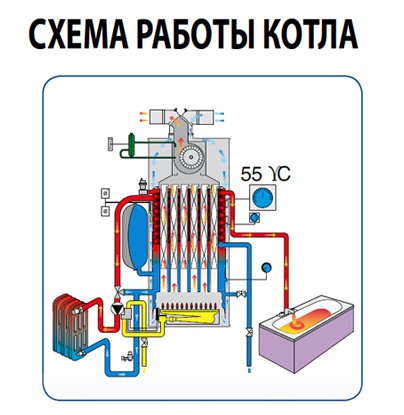
The main advantages of hot water gas units the following:
- quick access to optimal operating modes – 2-4 hours;
- compactness;
- ease of installation;
- ease of operation and maintenance;
- environmental friendliness.
The main advantage of boilers of this type is the low cost of thermal energy, an order of magnitude lower than others heating devices. The main scope of application is the provision of hot water supply and heating of residential buildings located far from the heating plant. Usually hot water boilers installed at sites where installation of an autonomous boiler room is technically impractical and economically unprofitable.
In other words, water heating boilers are high-tech devices in which a large amount of thermal energy is generated by burning blue fuel. The resulting heat is used to heat water - the coolant that circulates in the heating circuit. Circulating in the pipeline heating circuit, the water heats the heating radiators, which then release heat to the air in the room. The pressure created in the system ensures the necessary supply of coolant to the farthest sections of the heating circuit and heating of the premises to a comfortable temperature.
The main point that you need to pay attention to before installing a hot water boiler is an uninterrupted water supply. good technical condition plumbing is a key aspect normal operation gas heating equipment.
Types of hot water boilers used in various fields
The classification of heating equipment of this type is based on the following criteria:
- type of fuel used;
- type of allocation;
- The main purpose.
Based on the type of fuel used, boilers are divided into gas appliances, liquid fuel, solid fuel and combined units. Of the listed equipment, gas boilers have the highest technical characteristics.

According to their purpose, water heating units are divided into industrial and domestic.
The first type is used for heating industrial buildings; the operation of such equipment requires special knowledge and experience, the operation of industrial boilers is clearly regulated by operating charts and instructions.
On a note. As a rule, the power of industrial boilers amounts to tens of megawatts (10-50 MW); steam is used as a coolant in industrial heating systems, which is why such equipment is often called steam boilers.
The second type is domestic hot water boilers, which are heating equipment of limited power. Such boilers are used for heating domestic and residential premises small sizes, limited area. They use ordinary water as a coolant.
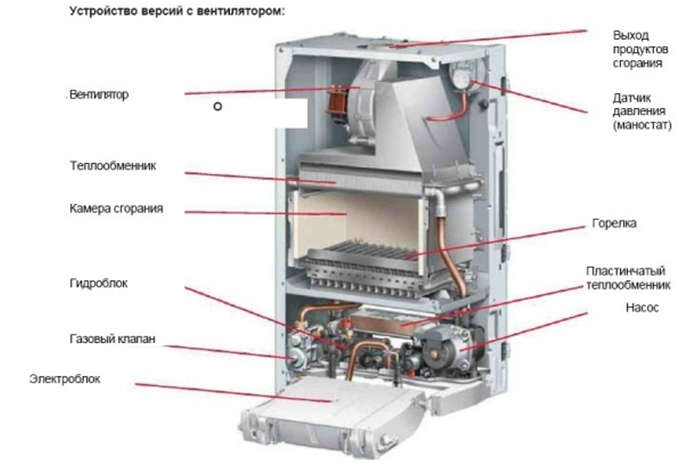
According to the type of design or placement, gas water heating units are divided into wall-mounted (mounted) and floor models. Mounted option gas boiler implies a device of low power. Such devices are installed in apartments or small private houses. Floor standing boilers have greater power and, therefore, larger dimensions. To install a floor-standing water heating unit, a special room is required - a boiler room, which must be equipped with ventilation.
The main purpose of a water heating device is determined by the method of heating boiler water. Boilers with a flow heating method provide set temperature water by heating the heating circuit located in the combustion chamber. Other models are equipped with storage tanks in which water is indirectly heated. Devices equipped storage tanks, have a shorter resource and are mainly used for hot water supply and heating of apartments and country houses small area. The number of water intake points in this case is also limited. Therefore, the greater the consumption of hot water from DHW systems, the greater the capacity and power the additional boiler should have indirect heating, used if the gas boiler is single-circuit.
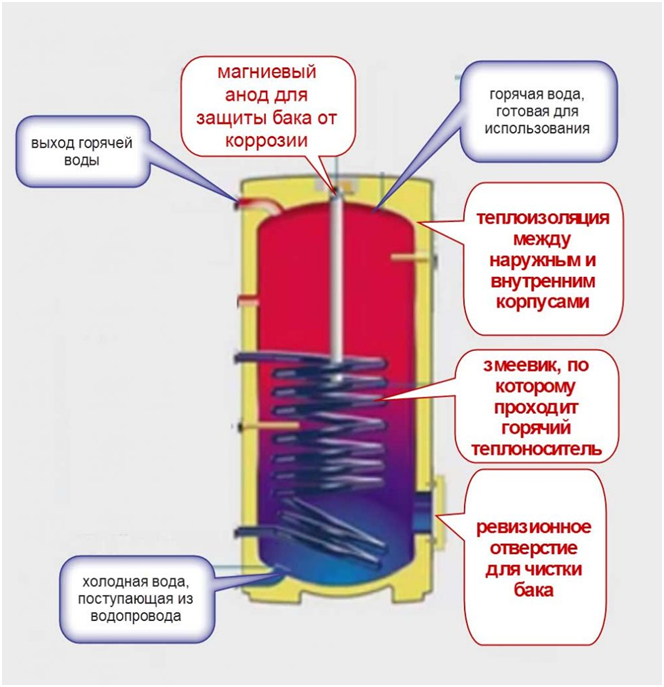
Important! IN domestic boilers, which work for heating and to provide housing with hot water, most of the power is spent on heating water. Therefore, when choosing a boiler model, it is necessary to take into account the reserve power reserve, thanks to which hot water in the house will be in sufficient quantity, and home heating will be as efficient as possible in any weather.
On this moment Substantial part models on the market are double-circuit water heating boilers (not to be confused with a two-pipe heating system). Single-circuit units are less common.
The popularity of gas boiler models with a double-circuit coolant supply system lies in their high efficiency and uniform distribution of coolant throughout the entire heated area of the building. The ability to simultaneously provide hot water supply and heating in the house, while consuming minimal amount fuel - the main advantage of double-circuit gas water heating boilers, modern models which are equipped with circulators - devices that improve the circulation of coolant in the pipeline system.
Design of hot water boilers
Today the heating equipment market is saturated various models hot water boilers that have a similar design and differ only in power heating elements and, accordingly, productivity. The model range is represented by products from both domestic and foreign manufacturers.
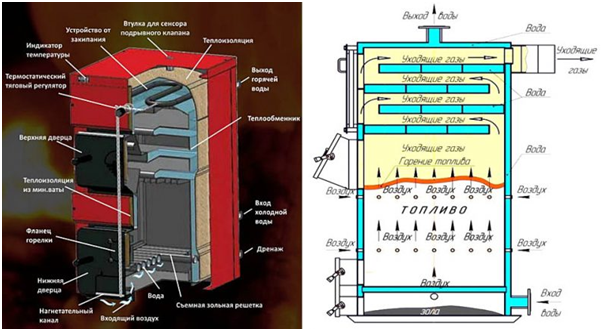
In respect of design features- nothing new. Typically, a gas water heating boiler has a durable steel or cast iron body, finished with thermal insulation materials. The basis of the design is a gas burner and a heat exchanger, used to heat the water that then enters the system.
Equipment of modern models
Water heating devices are equipped with gas-burners two types:
- atmospheric;
- supercharged.
The performance and, accordingly, the functionality of the boiler depend on the type of burner and the quality of its operation. The reason that the gas boiler does not heat the water sufficiently is that the gas pressure in the gas supply system has dropped, as a result of which the necessary flow into the combustion chamber is not ensured. As a consequence, the intensity of combustion of the gaseous fuel mass is low and the heating temperature of the heat exchanger is low.
Atmospheric burners naturally mix household gas with air, while forced-air burners are equipped with fans - blowers - for this purpose. Mixing of gas with air occurs under pressure. The fuel mass enters the furnace under high pressure, as a result of which the intensity of its combustion and the efficiency of heating the coolant are improved. In this case, the fuel is burned completely, increasing the coefficient useful action heating device.
In addition, forced-air burners providing required pressure gas in the system, more reliable in operation.
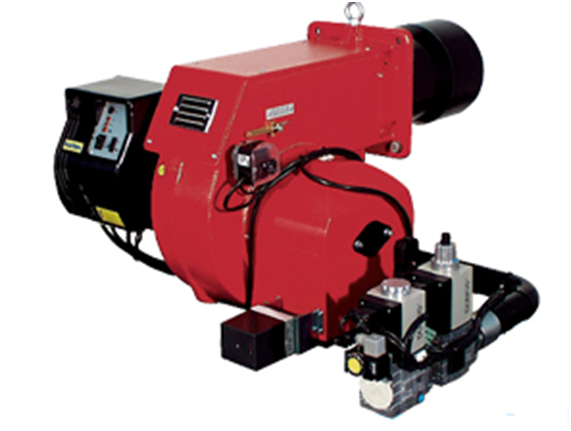
The design of the hot water boiler consists of the following elements:
- support frame (for floor type);
- block of convective, radiation heating surface;
- block with spare parts (shut-off valves, valves and taps).
The water heating boiler is installed on a support frame or mounted on a wall, after which the air duct, water and gas are connected. The installation is completed with the installation of instrumentation, shut-off valves and the installation of safety valves. As a rule, all hot water boilers are equipped with an explosion valve, which is installed with back side device. The main task of this device is to prevent destruction of the heating circuit due to overheating and exceeding the operating pressure in the combustion chamber.
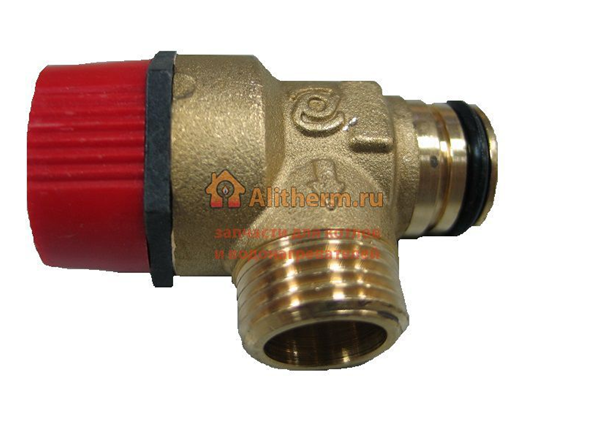
An important component of the boiler is pumping equipment, the required performance of which is determined by calculation in relation to the heated area and power of the boiler.
During the installation of the boiler, it is also necessary to equip a smoke exhauster, through which fuel combustion products will be removed from the combustion chamber. The parameters of the smoke exhauster are also determined by calculation at the stage of developing a heating system project. Incorrect calculation of the characteristics of the smoke exhauster is fraught not only with layers of soot on its walls and a decrease in the efficiency of the boiler, but also with a dangerous deterioration in the functioning of ventilation and a high concentration of carbon monoxide in the room.
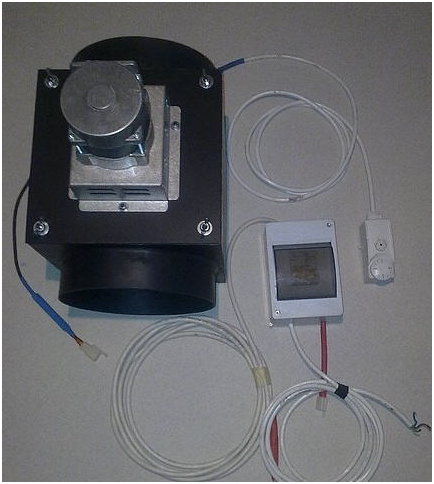
In conclusion, a few words about what additional attention should be paid when choosing a unit. Having determined the required power and having an idea of the conditions of its future operation, it is also necessary to study the capabilities and degree of reliability of the automation, on the operation of which not only the efficiency of the heating and hot water systems, but also the safety of the inhabitants of residential premises depends.
A gas heating boiler is a device that uses fuel combustion (natural or liquefied gas) to heat the coolant.
Design (design) of a gas boiler: burner, heat exchanger, thermally insulated housing, hydraulic unit, as well as safety and control devices. Such gas boilers require a chimney connection to remove combustion products. The chimney can be either ordinary vertical or coaxial (“pipe in pipe”) for boilers with closed camera combustion. Many modern boilers are equipped with built-in pumps for forced circulation water.
The principle of operation of a gas boiler- the coolant, passing through the heat exchanger, heats up and then circulates through the heating system, releasing the resulting thermal energy through radiators, heated floors, heated towel rails, as well as by heating water in an indirect heating boiler (if it is connected to a gas boiler).
A heat exchanger is a metal container in which the coolant (water or antifreeze) is heated - can be made of steel, cast iron, copper, etc. The reliability and durability of a gas boiler depend primarily on the quality of the heat exchanger. Cast iron heat exchangers are resistant to corrosion and have a long service life, but are sensitive to sudden temperature changes and are heavy. Steel containers can suffer from rust, so their internal surfaces are protected with various anti-corrosion coatings to extend the “life” of the device. Steel heat exchangers are the most common in boiler production. Copper heat exchangers are not susceptible to corrosion due to high coefficient heat transfer, low weight and dimensions, such heat exchangers are often used in wall-mounted boilers, but one of the minuses should be noted that they are more expensive than steel ones.
In addition to the heat exchanger, an important part of gas boilers is the burner, which can be various types: atmospheric or fan, single-stage or two-stage, with smooth modulation, double.
To control a gas boiler, automation is used with various settings and functions (for example, a weather-dependent control system), as well as devices for programming operation and remote control boiler
The main technical characteristics of gas heating boilers are: power, number of heating circuits, fuel type, type of combustion chamber, type of burner, installation method, presence of a pump and expansion tank, automatic boiler control.
To determine required power gas heating boiler for private country house or apartment used simple formula- 1 kW of boiler power for heating 10 m 2 of a well-insulated room with a ceiling height of up to 3 m. If heating of a glazed basement is required winter garden, rooms with non-standard ceilings, etc. The power of the gas boiler must be increased. It is also necessary to increase the power (about 20-50%) when providing a gas boiler and hot water supply (especially if it is necessary to heat the water in the pool).
Feature of power calculation for gas boilers: the nominal gas pressure at which the boiler operates at 100% of the power declared by the manufacturer, for most boilers is from 13 to 20 mbar, and the actual pressure in gas networks in Russia can be 10 mbar, and sometimes lower . Accordingly, a gas boiler often operates at only 2/3 of its capacity and this must be taken into account when calculating. For more details, see the table for calculating the power of a heating boiler.
Most gas boilers can be convert from natural gas to liquefied gas(cylindered propane). Many models switch to liquefied gas at the factory (when purchasing, check these characteristics of the model), or the gas boiler is additionally supplied with nozzles (nozzles) for switching to bottled gas.
Pros and cons of gas boilers:
Boiler piping- These are devices for the full operation of the heating and water supply system. It includes: pumps, expansion tanks, filters (if necessary), collectors, return and safety valves, air valves, valves, etc. You will also need to purchase radiators, connecting pipes and valves, thermostats, a boiler, etc. The issue of choosing a boiler is quite serious, so the selection of equipment and its complete set It's better to leave it to professionals.
Which boiler is the best? On Russian market gas boiler equipment has its own leaders in quality and reliability. The best manufacturing companies and brands of gas boilers are presented in an assortment:
"Premium class" or "Lux"- the most reliable and durable, easy to use, the kit is assembled like a “construction set”, more expensive than others. Such manufacturers include the German companies Buderus
A boiler is a powerful stationary water heater designed to produce hot water or steam. Industrial boilers are heating systems, which have high powers and as a result - large sizes. Typically, industrial heating boilers are bulky systems that are installed in specialized premises that meet all safety requirements. Installation and maintenance of such boilers is carried out by specialized organizations.Separation of boilers by coolant ("output product"):
- hot water boilers.
- steam boilers.
Steam boilers .
Steam boilers designed for steam production and according to their purpose are divided into:
- energy boilers, producing steam used in steam turbines to generate electrical energy. Similar boilers are used at thermal power plants and combined heat and power plants in conjunction with turbogenerators. This combination is called a turbo unit.
- industrial boilers- generate steam for technological needs. Steam boilers are often used in the woodworking industry to maintain the necessary humidity in the drying chambers valuable species wood, in medicine for sterilization of instruments and workwear, in agriculture in the production of compound feed, etc.
Industrial boilers produce saturated steam, and energy overheated.
Saturated steam is called steam that is formed during the boiling process and is in dynamic equilibrium with the liquid, i.e. steam has the boiling point of water.
Saturated steam is used, in particular, for heating “dark” petroleum products (fuel oil, lubricating oils) when transporting them through pipes.
Superheated steam- steam heated to a temperature exceeding the boiling point at a given pressure. Superheated steam is used in heat engines to increase their efficiency.
Example of steam boilers: boilers of the TGM, TGMP, TP series. Outdated steam boilers still remain in operation: Babcox-Wilcox and Bukkau.
Due to the fact that “technological” boilers are not considered in the energy industry, in the energy literature “energy” boilers, together with powerful hot water boilers, are often called “industrial”, in contrast to low-power “household” boilers intended for heating apartments , dachas and cottages.
Since this site has an energy theme, the same terminology is used here.
Hot water boilers.
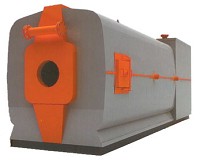
Hot water boiler designed for heating water under pressure
“Under pressure” means that boiling water in the boiler is not allowed: its pressure at all points is higher than the saturation pressure at the temperature reached there (almost always it is higher than atmospheric pressure).
Hot water boilers are used mainly for heat supply in district boiler houses and thermal power plants. In the latter case, they are usually used as peak equipment on days of maximum heat loads, as well as to reserve heat from turbine extractions.
Peak hot water boiler installed at thermal power plants for additional heating of direct network water in addition to heating in steam turbine network heaters during the cold season. Typically this heating is carried out within 100-150°C. The most common in Russia are powerful peak water boilers of the PTVM and KVGM brands of various modifications.
By design features Steam and hot water boilers are divided into:
- gas-pipe,
- water tube.
Gas-tube boiler (fire-tube, smoke-combustion and smoke-fire-tube boiler)- a steam or hot water boiler in which the heating surface consists of small-diameter tubes, inside which hot combustion products of fuel move. Heat exchange occurs by heating the coolant (water), which is located outside the tubes.
The design is the opposite of a water tube boiler.
Gas-tube boilers are being replaced by water-tube boilers.
Water tube boiler- a steam or hot water boiler, in which the heating surface (screen) consists of boiling tubes, inside which the coolant (water) moves. Heat exchange occurs by heating the boiling tubes with hot products of combustion fuel. There are once-through and drum water-tube boilers.
Water-tube steam boilers are much more complex in design than gas-tube boilers. However, they heat up quickly, are virtually explosion-proof, are easily adjusted to accommodate load changes, are easy to transport, and can withstand significant overload.
The disadvantage of water tube boilers is that their design contains many units and components, the connections of which should not allow leaks during high pressures and temperatures. In addition, the units of such pressure boilers are difficult to access during repairs.
To better remember the design difference between gas-tube and water-tube boilers, it is useful to know that the most famous gas-tube boiler is the samovar.
All high-power water-heating boilers are water-tube boilers, with air forced by fans
Example: PTVM, KVGM, TVG
Hot water boilers are divided according to the temperature level of the coolant (outlet water temperature):
- low temperature boilers(temperature up to 115 °C);
The low-temperature operating mode is economical, but places high demands on the material from which the boiler is made. At low temperatures In the boiler, condensation may form on its surfaces for a short time, which can negatively affect surfaces in contact with combustion products.
- superheated water boilers(temperature up to 150 °C and above).
Heating boilers that produce superheated water are characterized by high operational reliability, long term services, low noise and low emissions operation harmful substances, simple and convenient control, quick installation, convenient maintenance.
Most industrial hot water boilers produce superheated water. As an exception, we can cite the KV-R series of solid fuel boilers, where the water temperature at the boiler outlet is 95 °C.
Division of boilers by type of fuel used:
- gas boilers;
- liquid fuel (diesel) boilers;
- dual-fuel (gas-oil) boilers
- solid fuel boilers, for industrial boilers this is mainly coal.
Gas boilers.
Most economical boilers for now. They have low emissions of harmful substances into the atmosphere and the most complete combustion of fuel.
Industrial gas boilers have become particularly widespread in Russia. This is due to the fact that the cost of gas is much lower than any other source of fuel. In addition, in our country the gas supply is constant, and this makes it possible to do without the construction of separate storage facilities. Industrial boilers running on gas are easy to maintain and operate, and they have the highest level of efficiency. Fully automated, safe (the safety level of an industrial gas boiler is one hundred percent).
Thus, gas boilers are among the safest and most reliable. Boilers using other types of fuel are usually used in cases where the delivery of the inhibitor gas or its use is too expensive.
Liquid fuel (diesel) boilers.
Liquid fuel boilers are very close (in terms of performance) to gas boilers. The only difference is that the liquid fuel boiler runs on diesel fuel (which can be “summer” or “winter”).
Diesel fuel is widely used around the world as either a primary fuel or a backup fuel. In Moscow energy complex diesel fuel used as a backup.
Dual fuel (oil and gas) boilers, which operate on solid fuel, and with replaceable burners, can operate on gas or diesel fuel.
Solid fuel boilers.
Industrial boilers for solid fuel in some cases, they are the only type of heating equipment that can be used in a particular production. This is especially true in remote regions where gas or electricity are expensive.
Coal is the cheapest and most readily available fuel. However, it has never been the optimal fuel for thermal and power plants. Specific energy content per unit weight (i.e. calorific value) for coal is lower than for oil or natural gas. It is more difficult to transport, and, in addition, burning coal causes a number of undesirable environmental consequences, in particular acid rain.
Therefore, there has long been a worldwide trend to replace coal with natural gas.
However, given the cheapness and huge and widespread reserves of coal, work continues to create technologies designed to reduce its energy and environmental shortcomings. One of these directions is described in the article “The Future of Coal-Fired Thermal Power Plants,” published in the journal “In the World of Science” (Scientific American) No. 11 1987.
Conversion of steam boilers to hot water mode. Industrial steam boilers (with a capacity of 1-40 MW) can be converted into hot water boilers. This is advisable when the boilers have already reached the end of their design service life, and consumers do not need heat coolant, steam boilers are switched to water heating mode with maximum temperature water heating 115°C. Reconstructing a boiler is much cheaper than building a new hot water boiler.
In this case, the main part of the heating surfaces of the boiler is preserved, but the order in which they are turned on through the water changes. The boiler can be converted to any of the above circulation schemes; in this case, the drum is filled to the top with water, often partitions or some kind of distribution devices are placed in it; The economizer can be switched via network water parallel or in series with the former evaporation surface.
The advantage of this approach is that the operation of boiler houses is significantly simplified by removing the entire steam circuit from operation, as well as simplifying the operation of the boilers themselves - the efficiency of the boilers and the design thermal power do not decrease (and when the coolant temperature decreases, efficiency can increase significantly).
The disadvantages include the fact that when the boiler operates on low-quality network water, it can quickly become clogged (filters are needed). A boiler in variable modes (at different loads) behaves less stable than the corresponding hot water boiler; in some schemes, this causes the boiler to quickly fail. The boiler's power is less than that of a standard hot water boiler of the same area.
